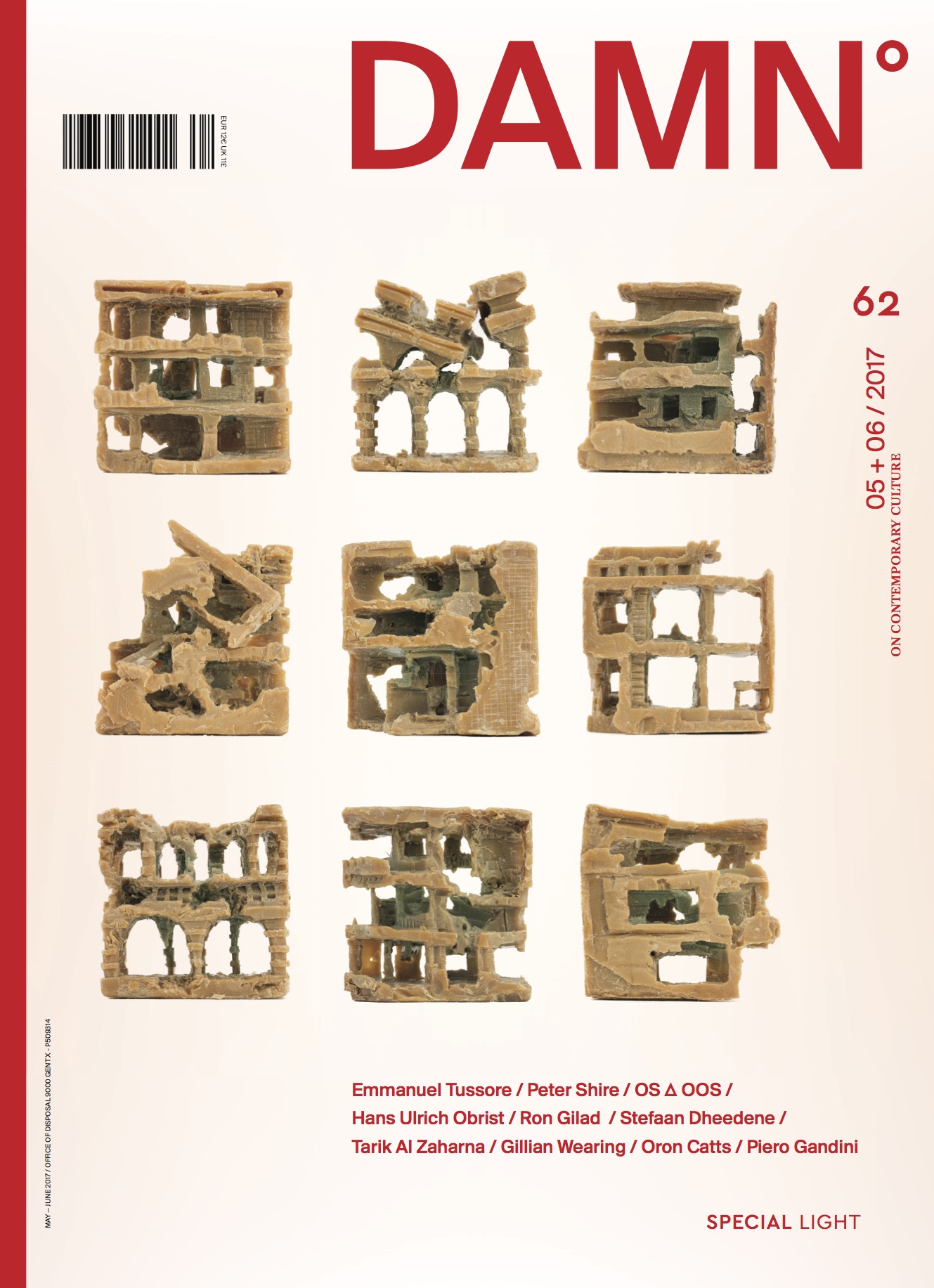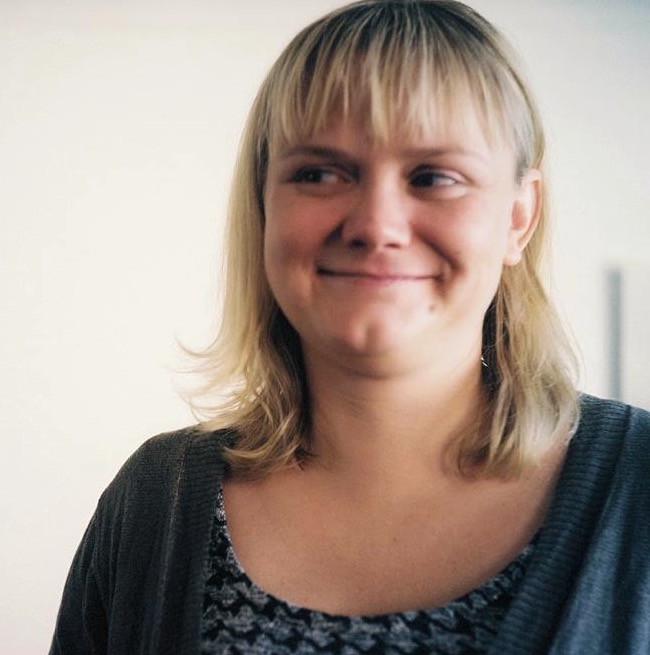Sabine Marcelis does not have green fingers. After completing nine projects during Milan Design Week and renovating a warehouse into apartments, the Dutch designer’s Rotterdam studio is full of wilting, thirsty-looking plants. “One would think that at least the cactuses would’ve survived!” she laughs. When it comes to light, mirrors, and cast resin, though, Marcelis has the Midas touch. Materials and how they transform from liquid to solid or from physical to experiential is what inspires her. Even if the designer’s iconic halo lights have burnt a hole in the design world, she always starts with messing around in the workshop until she finds something interesting, before defining a form or function.
“I am just a total sucker for circles”, says Marcelis, resisting any deeper interpretation, despite the celestial forms evoking lunar eclips- es and ethereal sunsets that appear in much of her work. Or the murky-coloured mirrors that might refract multiple reflections like a shadow in the corner of one’s eye. Perhaps, she concedes, there is something that harks back to her previous life as aspiring pro-snowboarder, which meant she spent a lot of time in the mountains and in nature and became hyperaware of the elements and their transformations. Although born in the Netherlands, Marcelis immigrated to New Zealand with her parents when she was nine years old. She moved away when she was 16 to follow her snowboarding dream, chasing double winters in New Zealand and the United States. At 21, however, she realised she wasn’t good enough to make a career out of it and finally settled on studying industrial design. Two years into the course in New Zealand, she transferred to Design Academy Eindhoven, in search of a more artistic approach to design.
 “I’m not big on analysing my work but I do think I absorb experiences like a sponge and that they come out in a different form later”, Marcelis says, also mentioning that her father is an engineer who started explaining machines to her when she was a child. She also foresees current and more recent experiences, such as her collaboration with OMA on the entrance to Kaufhaus des Westens (KaDeWe) in Berlin and on the Repossi flagship store in Paris, being expressed in her work in unexpected ways. Already she’s making more installations, including the Dutch pavilion at the Cannes Film Festival, inspired by 100 Years of De Stijl.
“I’m not big on analysing my work but I do think I absorb experiences like a sponge and that they come out in a different form later”, Marcelis says, also mentioning that her father is an engineer who started explaining machines to her when she was a child. She also foresees current and more recent experiences, such as her collaboration with OMA on the entrance to Kaufhaus des Westens (KaDeWe) in Berlin and on the Repossi flagship store in Paris, being expressed in her work in unexpected ways. Already she’s making more installations, including the Dutch pavilion at the Cannes Film Festival, inspired by 100 Years of De Stijl.
The fountain Marcelis made for Aesop in Milan also introduced her to working with water for the first time, something she would now like to explore further: “I’m becoming much more aware of the amount of waste and excess being produced, and water is such a pure material that is not going to harm the environment.”
 The fountain used a pump that caused the water to cascade in a curtain around neon lights shaped like Roman aqueducts. Combining light, water, and an electric pump was a real challenge, but coincidentally her father was in town, so figuring it out turned into “a little father-daughter bonding project”. In fact, for each of Marcelis’s projects, there is always a human anecdote. Although she finds her tight-knit, four-person studio perfect, she says she thrives off collaboration and cross-pollination with other entities. Relationships, then, might be considered her signature: the relationship between light and space, form and reflection, experience and connection. Many hands make light work.
The fountain used a pump that caused the water to cascade in a curtain around neon lights shaped like Roman aqueducts. Combining light, water, and an electric pump was a real challenge, but coincidentally her father was in town, so figuring it out turned into “a little father-daughter bonding project”. In fact, for each of Marcelis’s projects, there is always a human anecdote. Although she finds her tight-knit, four-person studio perfect, she says she thrives off collaboration and cross-pollination with other entities. Relationships, then, might be considered her signature: the relationship between light and space, form and reflection, experience and connection. Many hands make light work.


“I am just a total sucker for circles”, says Marcelis, resisting any deeper interpretation, despite the celestial forms evoking lunar eclips- es and ethereal sunsets that appear in much of her work. Or the murky-coloured mirrors that might refract multiple reflections like a shadow in the corner of one’s eye. Perhaps, she concedes, there is something that harks back to her previous life as aspiring pro-snowboarder, which meant she spent a lot of time in the mountains and in nature and became hyperaware of the elements and their transformations. Although born in the Netherlands, Marcelis immigrated to New Zealand with her parents when she was nine years old. She moved away when she was 16 to follow her snowboarding dream, chasing double winters in New Zealand and the United States. At 21, however, she realised she wasn’t good enough to make a career out of it and finally settled on studying industrial design. Two years into the course in New Zealand, she transferred to Design Academy Eindhoven, in search of a more artistic approach to design.

Sabine Marcelis. Photo: Valentina Vos
The fountain Marcelis made for Aesop in Milan also introduced her to working with water for the first time, something she would now like to explore further: “I’m becoming much more aware of the amount of waste and excess being produced, and water is such a pure material that is not going to harm the environment.”

Vedovelle Fountain for Aesop, 2017. Milan Design Week. Courtesy of Frame Magazine

Voie Lights, the stone edition, 2015. Marble Matters exhibition at Bloc studios. Photo: Giulia Torra

Sabine Marcelis, 2016. Photo: Lee Wei Swee



